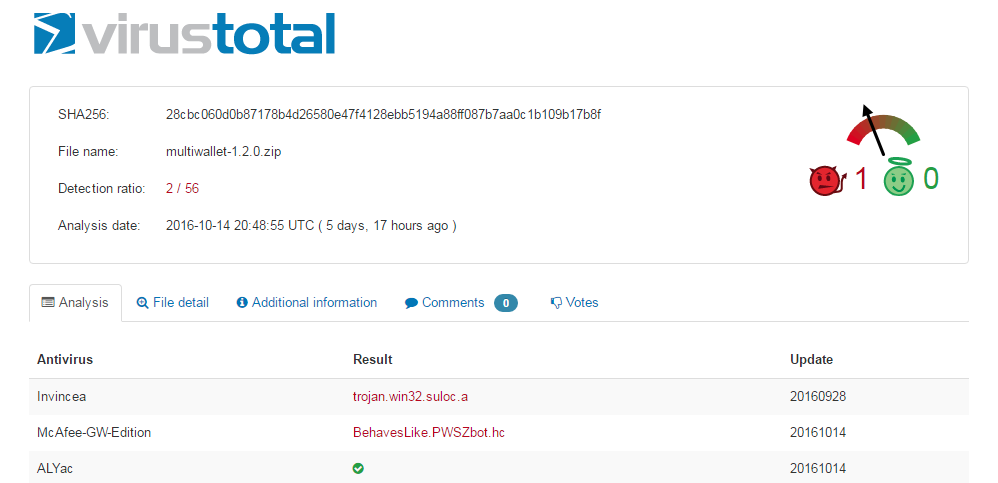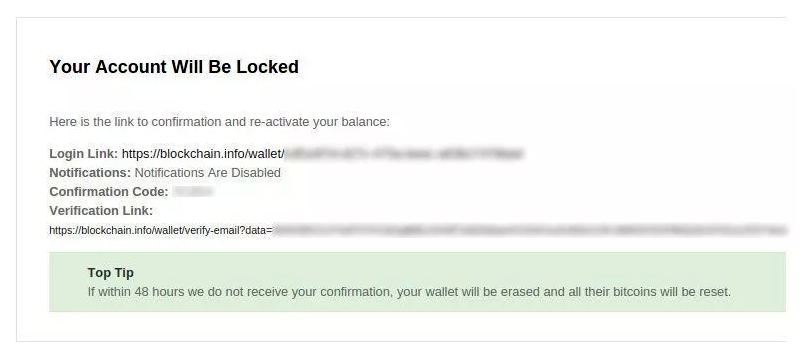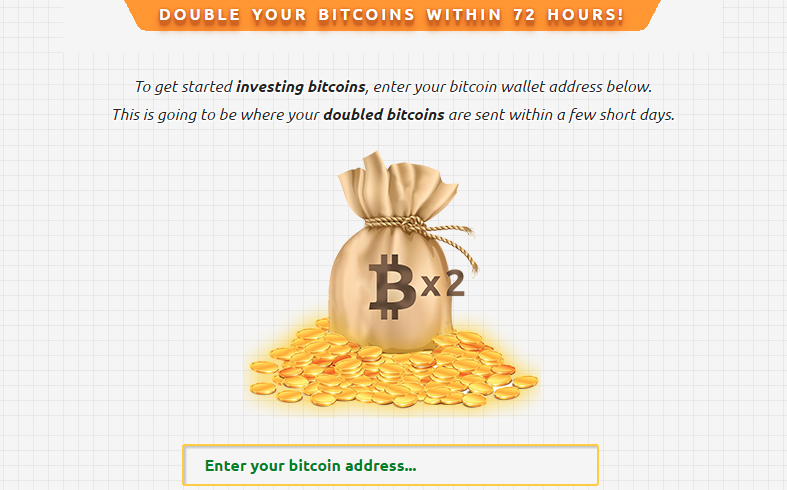Here's What Must Happen for $9k Bitcoin Price in the Coming Months

Image courtesy of CoinTelegraph
 JAN 04, 2020
JAN 04, 2020
Bitcoin (BTC) made a sudden jump of 8% yesterday and is currently hovering at around $7,300. As the price bounced from $6,900, a higher low is presenting itself on the chart, but does this mean that the bottom is there?
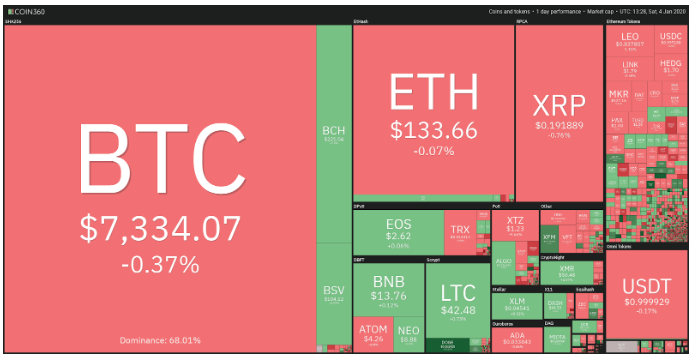
Crypto market daily performance. Source: Coin360
Bitcoin still stuck in sideways range and downtrend

BTC USD 1-day chart. Source: TradingView
The price of Bitcoin is still moving inside this downwards channel since last year’s high of $13,900. Remarkably, the price corrected towards the “Golden Pocket” Fibonacci area (0.618-0.65 level) and is currently showing a potential higher low.
The green area is also a significant area from 2018, as that was the zone the price of Bitcoin bounced on for 6-months.
Given that the price bounced from $6,900 to $7,400, there’s buying pressure shown from this area, indicating that the price might be bottoming inside this range.
Linear chart showing potential wedge structure
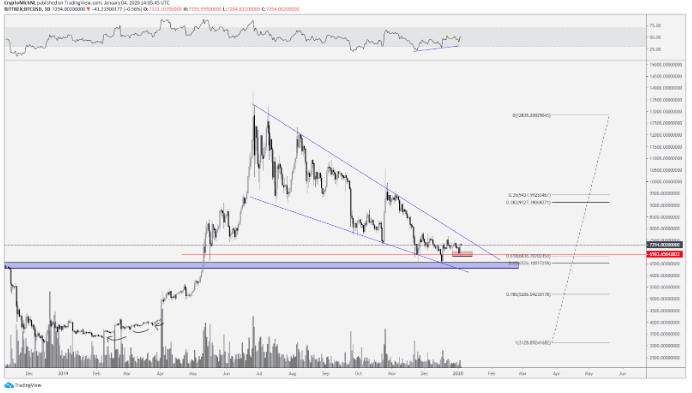
BTC USD 1-day linear chart. Source: TradingView
The linear chart shows similarities with the log scale chart. However, there’s more of a falling wedge construction rather than a channel. Meaning that the price is gathering strength for a breakout through the coming weeks, marking this level as a bottom area.
The chart is also showing a bullish divergence, which marked the temporary low at $6,500. Generally, bullish divergences mark a trend reversal (also seen in the December 20118 low at $3,100).
If price maintains this red box as new support and a higher low is established, then Bitcoin could face a rally towards $9,000 over the coming months.
Total market capitalization hovering at support
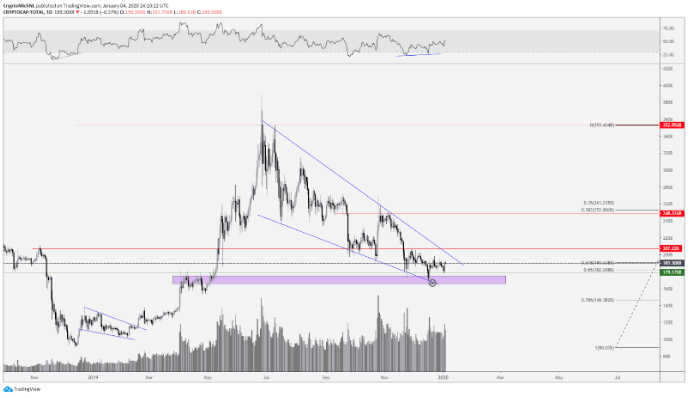
Total market capitalization 1-day chart. Source: TradingView
Similar signs show the total market capitalization chart, which has retraced to April 2019 levels. A test was confirmed by a sharp bounce upwards, followed by a potential higher low construction as we speak. Aside from these signals, a substantial bullish divergence potentially marked the bottom of this retracement.
This retracement is currently hovering around the 0.618-0.65 Fibonacci level as well (similar to Bitcoin). If market capitalization can maintain this higher low and consolidate on this level, a breakout to the upside of this falling wedge looks more likely than further downside momentum.
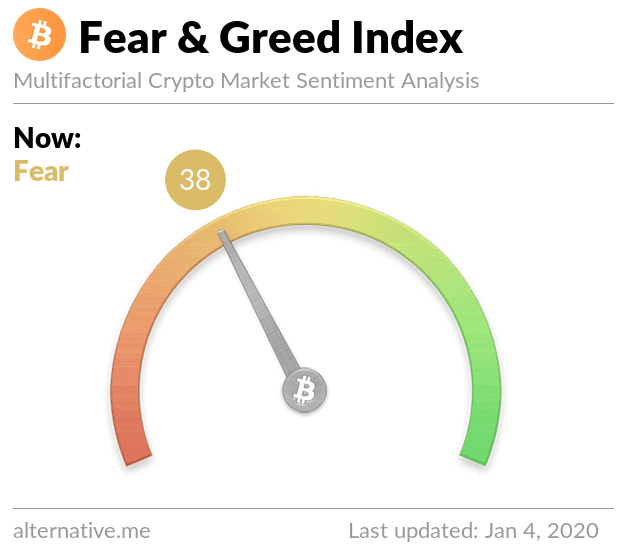
Crypto fear & greed index. Source: Alternative.me
Usually, when an asset is marking a temporary top, the sentiment is euphoric and greed becomes palpable. The opposite effect is the case around bottoms. People are usually scared and depressed as they are expecting further downwards momentum. The Fear & Greed Index has been showing fear for the last weeks, indicating that the overall market sentiment doesn’t expect a breakout to the upside.
Is such a sentiment warranted?
The price is still moving south, which means that some fear is warranted in the market. However, as the price is trying to bottom here, it would be interesting to look at potential upside momentum rather than further downwards. The same can be spotted on altcoins, for example, Ethereum (ETH).
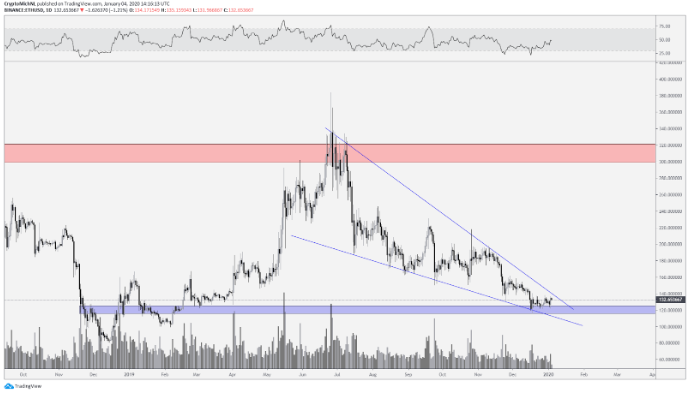
ETH USD 1-day chart. Source: TradingView
The ETH chart is showing a similar wedge formation as the Bitcoin and total market capitalization charts, meaning that a breakout to the upside is likely to occur in the next month. Aside from that, the price bounced from a support area here and is potentially making a bottom formation.
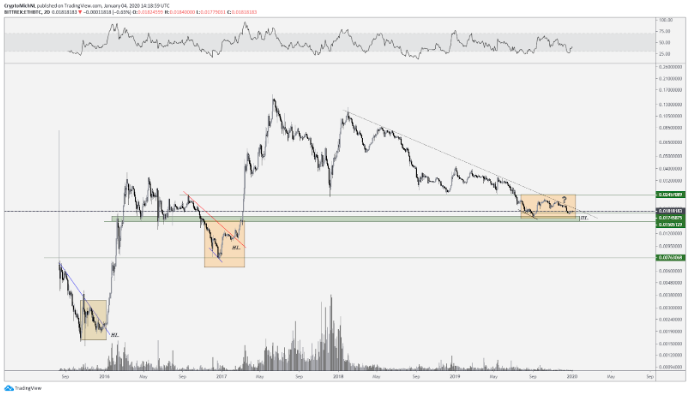
ETH BTC 2-day chart. Source: TradingView
On the BTC chart, many altcoins are facing a long term downtrend. Ether, for example, is in the midst of a 2-year old downtrend that it must break out of. Interestingly, the months of January/February have historically seen Ether price significantly increase and/or breakout of downtrends.
During 2016, a similar breakout was shown, after which 2017 repeats the same move. First, a bottom formation includes a bullish divergence. After this, a higher low is marked, followed by a breakout to the upside.
In 2018 and 2019, a significant move to the upside was seen in the ETH/BTC pair as well, though no breakout of the general downtrend occurred. This time it’s possible, however, as Ethereum Classic (ETC) and Bitcoin Cash (BCH) are already breaking their downtrends that have been in place for two years.
The bullish scenario for Bitcoin
So what must Bitcoin price do now to generate such a breakout to the upside?
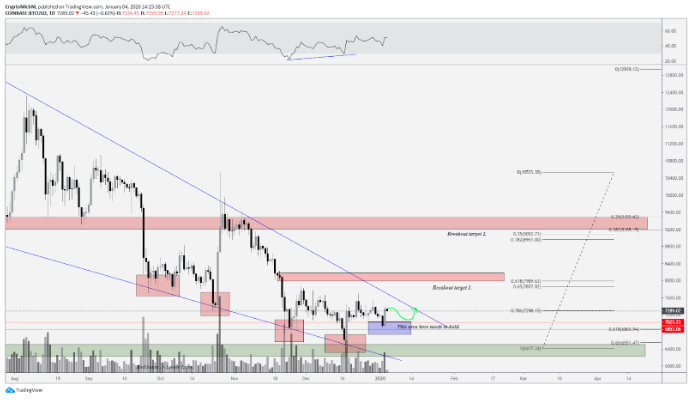
BTC USD bullish scenario. Source: TradingView
As discussed previously in the article, the price needs to maintain the blue area as a higher low and not drop below it. As long as that level is sustained as support, a breakout to the upside is likely to occur. This would cause the 6-month old downtrend to break to the upside, which potentially means the end of the downward momentum.
The targets based on previous support/resistance and Fibonacci levels first include $8,000. If that’s broken, the price is ready to aim for $9,100-9,500, which would typically shift the sentiment from fear to neutral.
The bearish scenario for Bitcoin
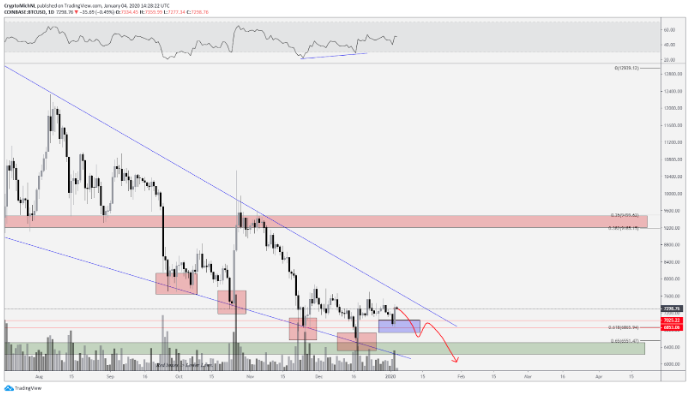
BTC USD 1-day bearish scenario. Source: TradingView
A bearish scenario can be warranted through the opposite of the bullish scenario and is pretty basic. If the price of Bitcoin is not able to hold the blue area as support, the bullish divergence is not confirmed, and the price is ready to continue downwards.
In that regard, a potential retest of the $6,900 level would grant an excellent short opportunity, and then the next support zones can be found in the $6,200-6,500 area.
The views and opinions expressed here are solely those of the author and do not necessarily reflect the views of Cointelegraph. Every investment and trading move involves risk. You should conduct your own research when making a decision.
Original article posted on the CoinTelegraph.com site, by Michaël van de Poppe.
Article re-posted on Markethive by Jeffrey Sloe
































